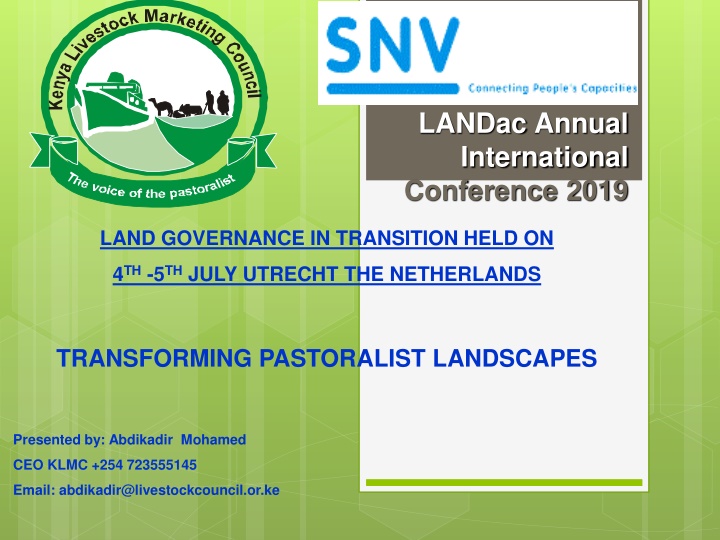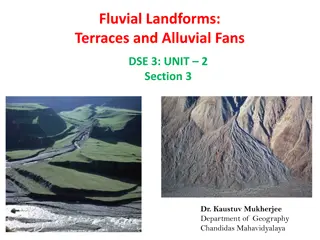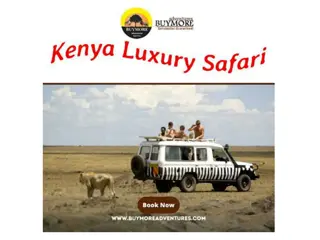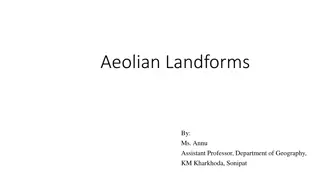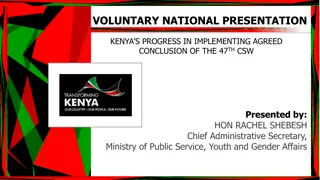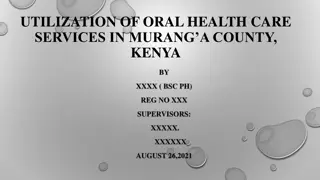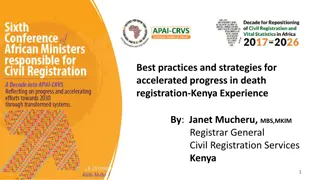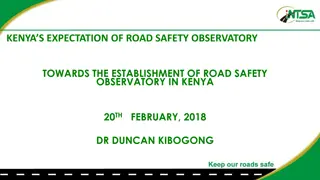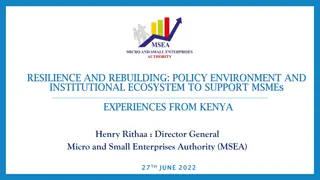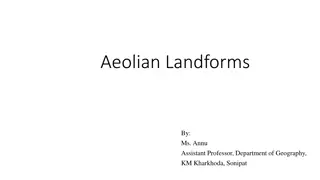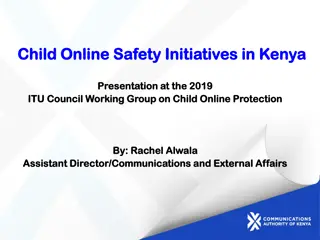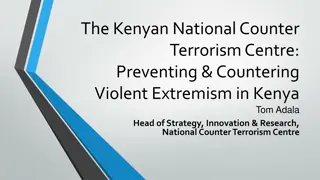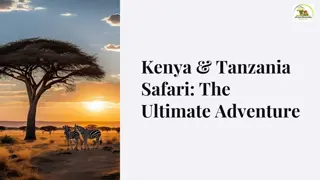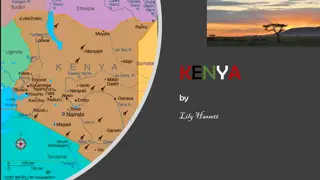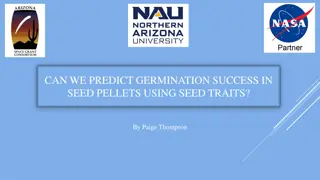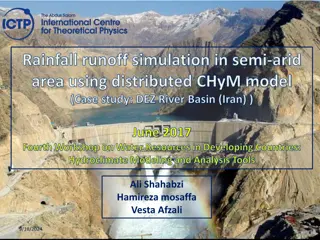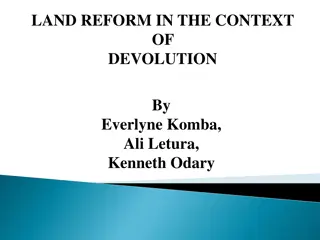Challenges Faced in Isiolo County, Kenya's Arid Region
Isiolo County in Kenya, characterized by arid and semi-arid lands, faces challenges related to fragile ecosystems, climate change impact, land use competition, breakdown of traditional resource systems, and tribal conflicts. This poses threats to the nomadic pastoral way of life and sustainable land management in the region.
Download Presentation

Please find below an Image/Link to download the presentation.
The content on the website is provided AS IS for your information and personal use only. It may not be sold, licensed, or shared on other websites without obtaining consent from the author.If you encounter any issues during the download, it is possible that the publisher has removed the file from their server.
You are allowed to download the files provided on this website for personal or commercial use, subject to the condition that they are used lawfully. All files are the property of their respective owners.
The content on the website is provided AS IS for your information and personal use only. It may not be sold, licensed, or shared on other websites without obtaining consent from the author.
E N D
Presentation Transcript
LANDac Annual International Conference 2019 LAND GOVERNANCE IN TRANSITION HELD ON 4TH -5TH JULY UTRECHT THE NETHERLANDS TRANSFORMING PASTORALIST LANDSCAPES Presented by: Abdikadir Mohamed CEO KLMC +254 723555145 Email: abdikadir@livestockcouncil.or.ke
NATIONAL STATISTICS Kenya is an Arid county. Arid and Semi-Arid Lands (ASALS) make up to 89% of the landmass. ASAL is occupied by 30% of the population (approx. 14 million). Supports 70% of National livestock herd and 90% of the wildlife which supports tourism. ASAL contributes 10% and 45% of Kenyans Gross Domestic products (GDP) and Agricultural Gross Domestic Product (AGDP) respectively. Source: Kippra, Kenya Economic report 2018, IFPRI pastoralist economic contribution to Kenya economy 2017.
NATIONAL DOCUMENTS THAT PROMOTE LAND ISSUES 1. The Constitution of Kenya 2010 2. The Kenya Vision 2030 3. The Community Land Act, 2016 4. Ending Drought Emergencies (EDE) Programme Framework 5. Draft National Land Use Policy, May 2016 6. The National Environmental policy, 2014 7. The Isiolo County Integrated Development Plan (CIDP) 2013-2017
ISIOLO COUNTY CONTEXT Most of the land in the county is flat low lying plain. The plains rise gradually from an altitude of about 200 M above sea level at Lorian swamp (Habaswein) 300M above sea level at Merti Plateau and 1100 M above the sea level at Isiolo town. The County lies in two ecological zone semi-Arid and Arid 80% of the County receives about 250 to 300 mm of rainfall annually The annual temperature in the County is 29 degrees centigrade The County covers an area of 25,700 km2 with population of 143,294 in 2009 and projected to rise to 164,949 by 2022 (Kenya national Bureau statistics 2017) 90% of the population depend on livestock production - Nomadic pastoralism Source: the Isiolo County integrated plan 2017-2022 (CIDP 2018-2022
CHALLENGES 1. ASAL are fragile ecosystems that are very sensitive to climate change. 2. During frequent droughts, the rangelands become a desert islands and barely support communities and animals. 3. Due to its potential, ASALs, particularly ISIOLO County has very high competition for land use, affecting the nomadic lifestyle 4. Isiolo is targeted to host international Airport, MEGA Dams, Resort City, Oil pipeline and trans African connectivity roads. 5. The reduced Rangeland in Isiolo County has led to breakdown of nomadic pastoral resource utilization system leading to tribal resource conflict. 6. The Traditional Rangeland Management and Resource utilization systems based on tribes, clans don t function any more.
INTERVENTION Through the SNV- Voice for Change partnership, KLMC and Isiolo County Government partnered to ensure an inclusive Rangeland Management Policy is developed. Other development partners like AHADI supported in the drafting of the Rangeland Policy. KLMC mobilized and supported communities from three wards of GarbaTulla sub county, Cherab, Chari and Oldonyiro in Isiolo sub county. KLMC provided opportunity to various interest groups e.g. women, youth, livestock producers, traders and people with disability to present their views on the rangeland policy making The communities were informed of the meetings and issues to be discussed through local leaders and local FM Radio Stations.
RESULTSIssues captured in the policy as a result of Community participation Human and wildlife conflict to be addressed by the policy & compensation issues addressed as well Influx during drought time- Address how the county government and community are to handle the influx Grabbing of rangeland by individuals and government institutions. The policy should protect the rangeland by limiting expansion of settlement and grabbing of rangeland Customary institution. To be recognized and respected for managing rangelands and also legislated and support the institution
CONCLUSION AND KEY MESSAGES 1. Community involvement in drafting the Rangeland Management Policy was important 2. It also creates sense of ownership to the community 3. Build consensus and teamwork in the implementation of the documents between the county and communities in Isiolo 4. Climate change mainstreaming in all policy documents 5. Monitoring of the implementation and progress of the policy 6. Scaling to neighboring Counties of Marsabit, Samburu and others
THANK YOU FOR YOUR ATTENTION Email: klmc@livestockcouncil.or.ke Website:www.livestockcouncil.or.ke
